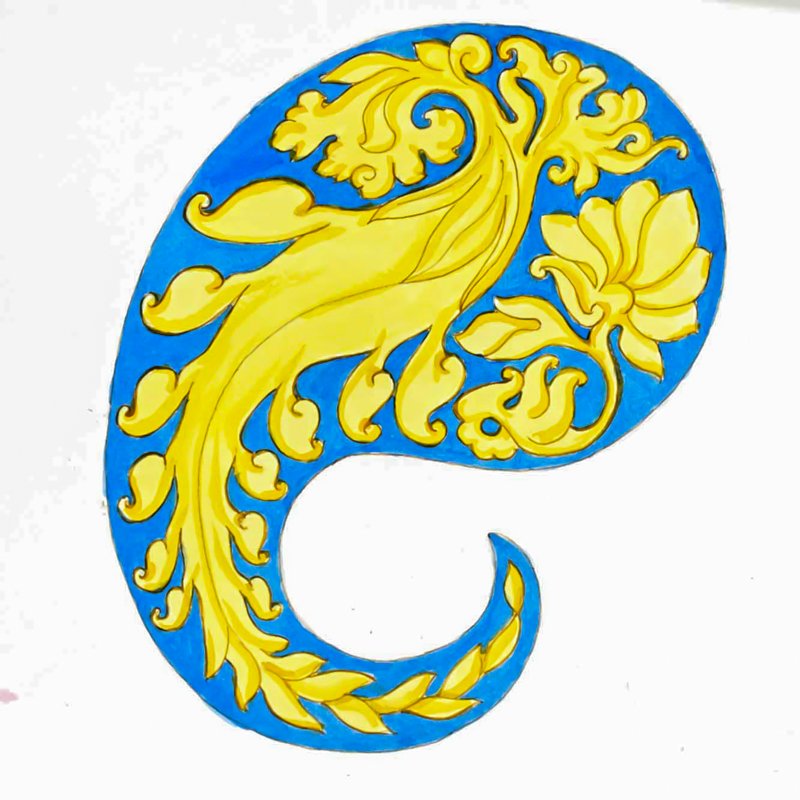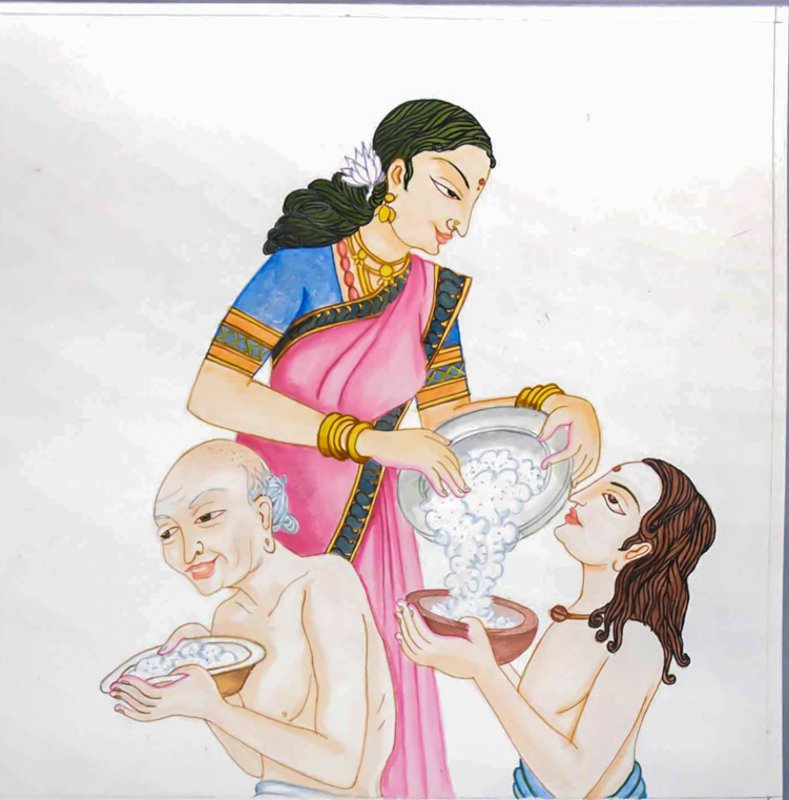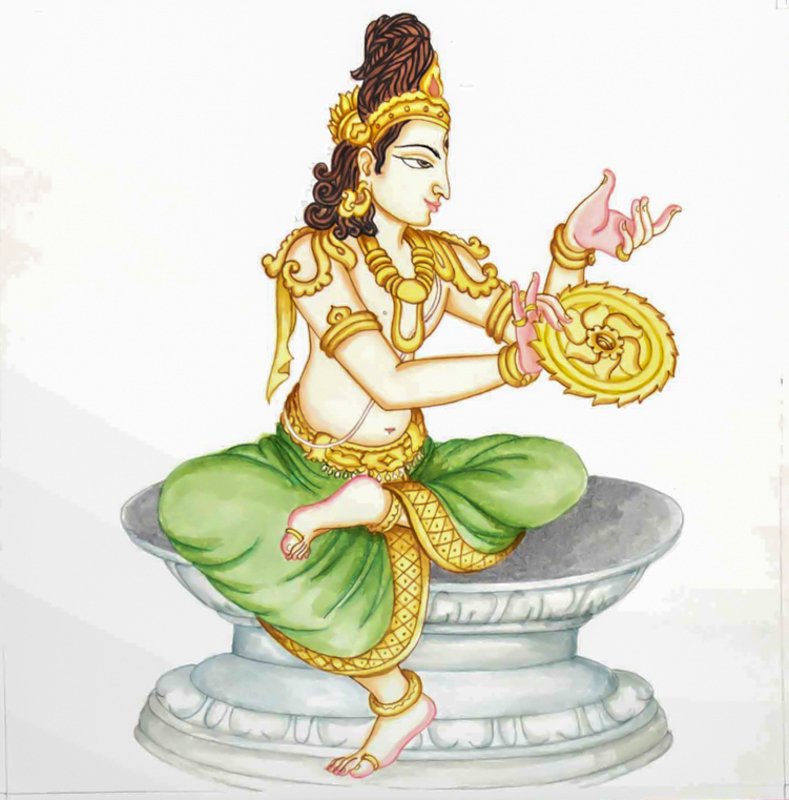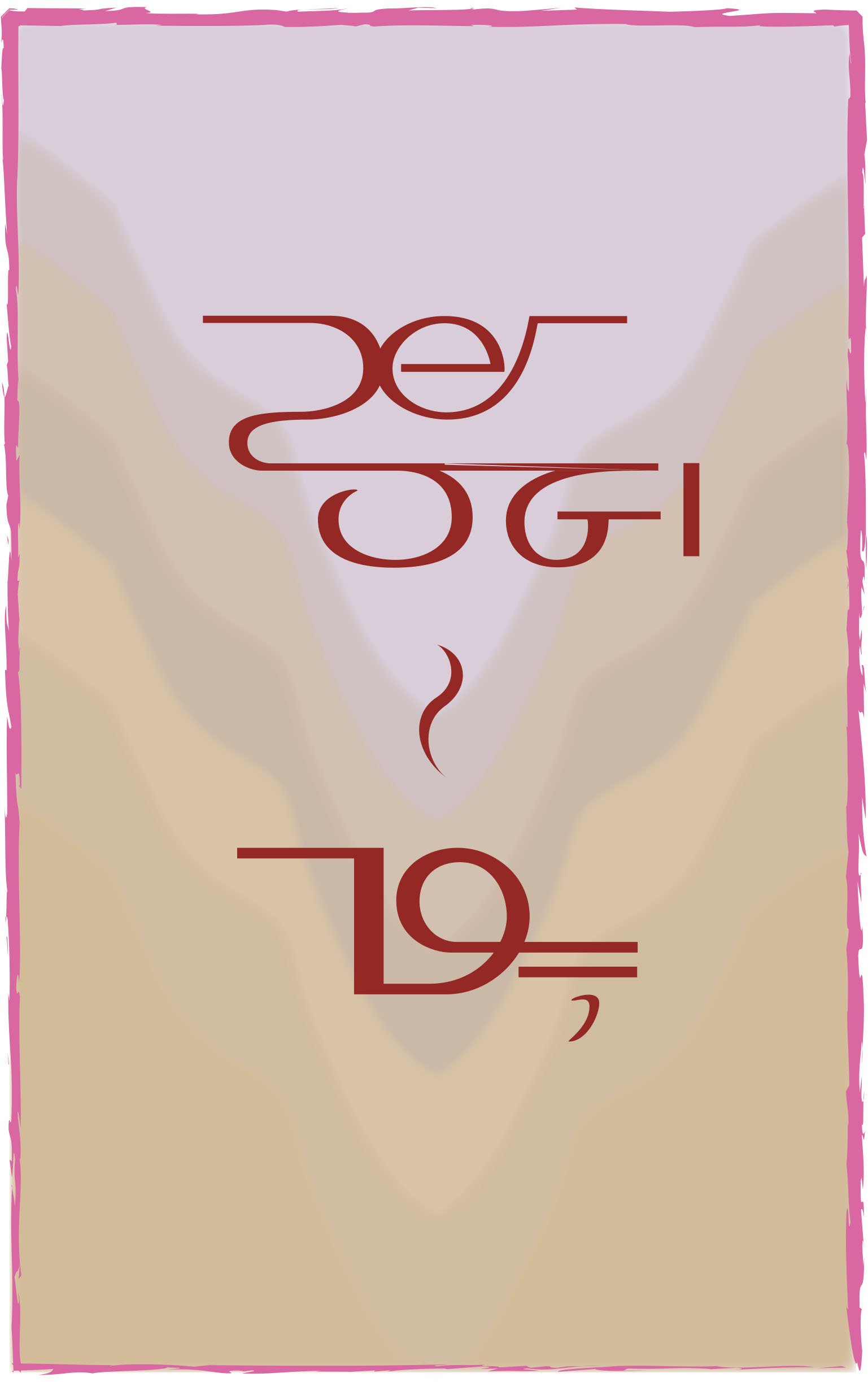Pillar Seventeen
Artwork by A. Manivelu
Top

NORTH FACE:
Pua KenikeniThe name puakenikeni (Fagraea berteroana) translates to “ten-cent-flower,” the price of one of the white, trumpet-shaped blooms when the tree was imported into Hawaii in the 1930s. Now added to Hawaiian leis, those highly fragrant flowers originated in northern Australia. Gurudeva designated it as the official flower of Kadavul Hindu Temple, and it lines the entryway there.

EAST FACE:
Jamin, Java PlumJamun is a famed tree and edible fruit (Syzygium cumini, commonly known as Malabar plum, Java plum or black plum). It is native to the Indian Subcontinent and has become invasive in Hawaii. It is spoken of in the Vedas.

SOUTH FACE:
Amla or NelliThe Amla tree and fruit (Phyllanthus emblica, also known as Indian gooseberry) is famed in India and Sri Lanka, and used widely in ayurvedic medicine. It is high in vitamin C. There is a mature tree just north of the Swayambhu Lingam, not far from Iraivan Temple.

WEST FACE:
PaisleyThe paisley, a stylized shape of the mango, is the symbol of auspiciousness, often associated with Lord Ganesha. It is a common artistic motif in Indian art.
1 of 4
Middle

NORTH FACE:
Kama, EnjoymentKama means “pleasure, love, desire.” It also refers to cultural, intellectual and sexual fulfillment. Kama is one of four human goals, called purushartha.

EAST FACE:
Moksha, LiberationThe broken chain represents moksha, which is Sanskrit for liberation, release from transmigration (samsara), the round of births and deaths. This release occurs after karma has been resolved and nirvikalpa samadhi—realization of the Self, Parasiva—has been attained. Synonymous with mukti.

SOUTH FACE:
Dharma, VirtueDharma, “righteousness,” is represented here by a woman feeding hungry beggars. From dhri, “to sustain; carry, hold.” Hence, dharma is “that which contains or upholds the cosmos.” Dharma, another name for religion, is a complex and comprehensive term with many meanings, including divine law, law of being, way of righteousness, ethics, duty, responsibility, virtue, justice, goodness and truth. Essentially, dharma is the orderly fulfillment of an inherent nature or destiny. Relating to the soul, it is the mode of conduct most conducive to spiritual advancement, the right and righteous path. There are four principal kinds of dharma, known collectively as chaturdharma, “four religious laws:” 1) rita: “Universal law:” The inherent order of the cosmos. 2) varna dharma: “Law of one’s kind:” Social duty. 3) ashrama dharma: “Duties of life’s stages;” human or developmental dharma; the natural process of maturing from childhood to old age through fulfillment of the duties of each of the four stages of life—brahmachari (student), grihastha (householder), vanaprastha (elder advisor) and sannyasa (religious solitaire). 4) svadharma: “Personal path, pattern or obligation:” One’s perfect individual pattern through life, according to one’s own particular physical, mental and emotional nature.

WEST FACE:
Artha, WealthArtha is wealth, represented here by a bag of gold nuggets and a stack of coins. Artha also has the meaning of utility and desire.
1 of 4
Bottom

NORTH FACE:
DharmachakraDharmachakra is a form of God Siva holding a discus or chakra of dharma.

EAST FACE:
The Spine's PowerThe spine’s power. This is Shum script for simshumbisi, kaif. It is a meditation in Gurudeva’s language of meditation and one of the 12 meditations he asked us to carve on the pillars. This is the November meditation. It roughly translates to “Meditate on the power within your spine, then go into that energy to the seventh dimension where awareness is completely aware of itself and only itself.
1 of 2
